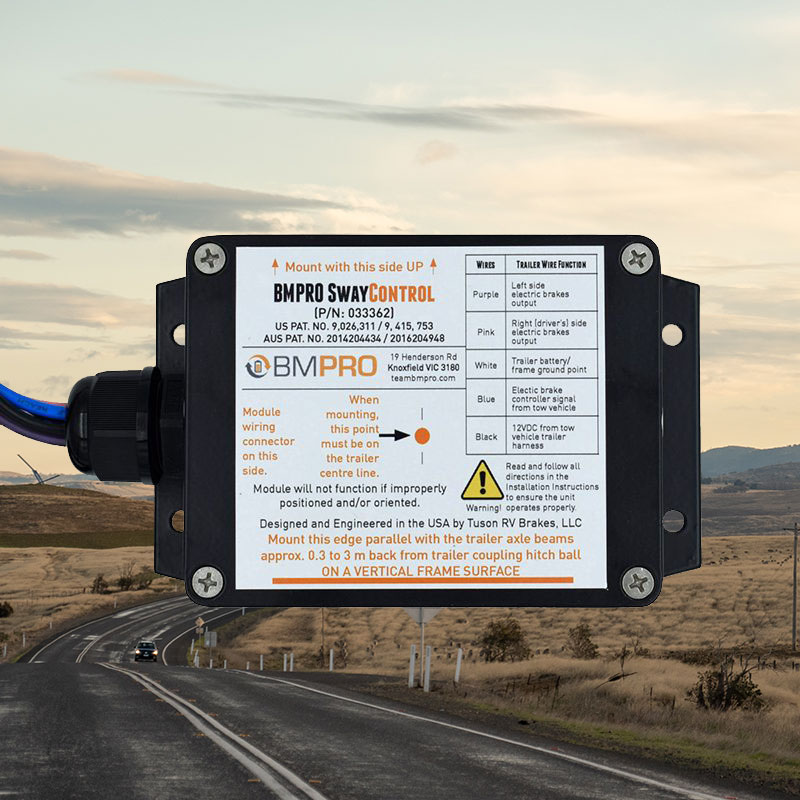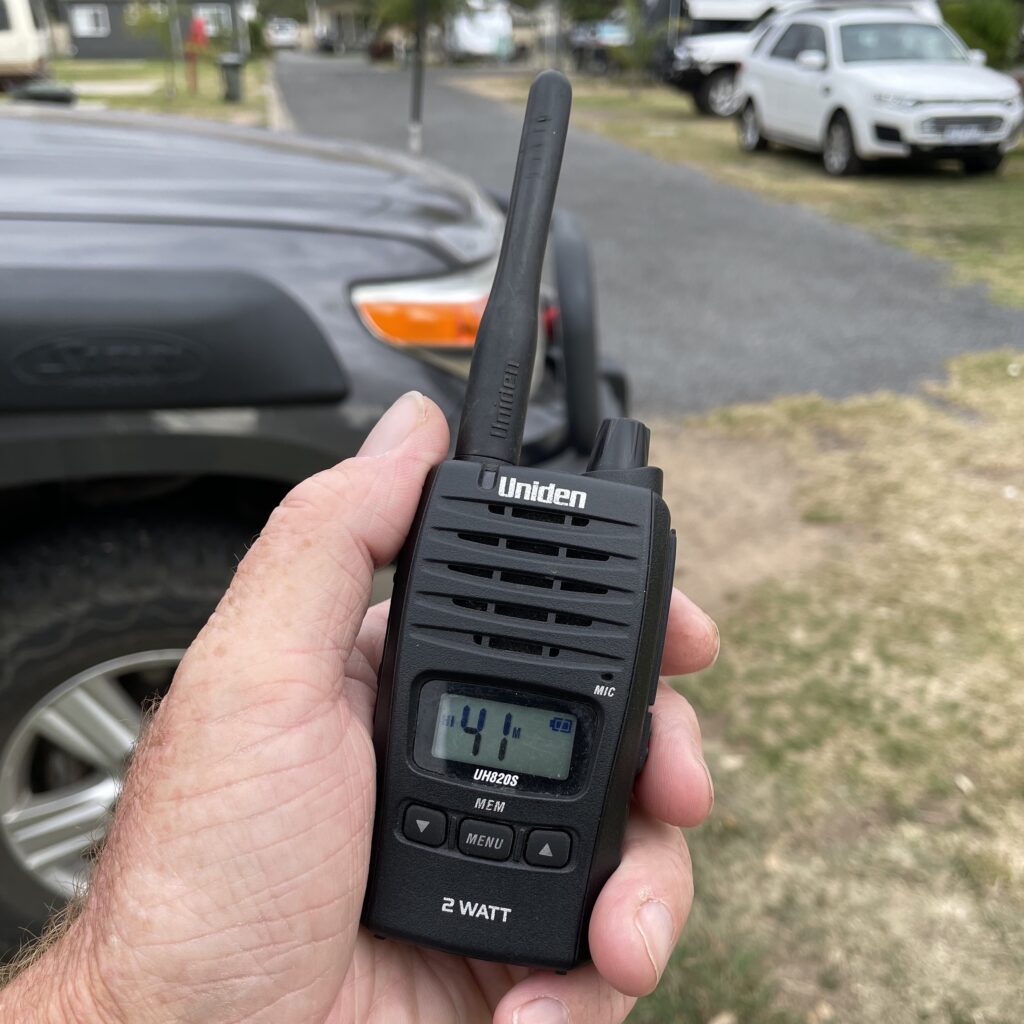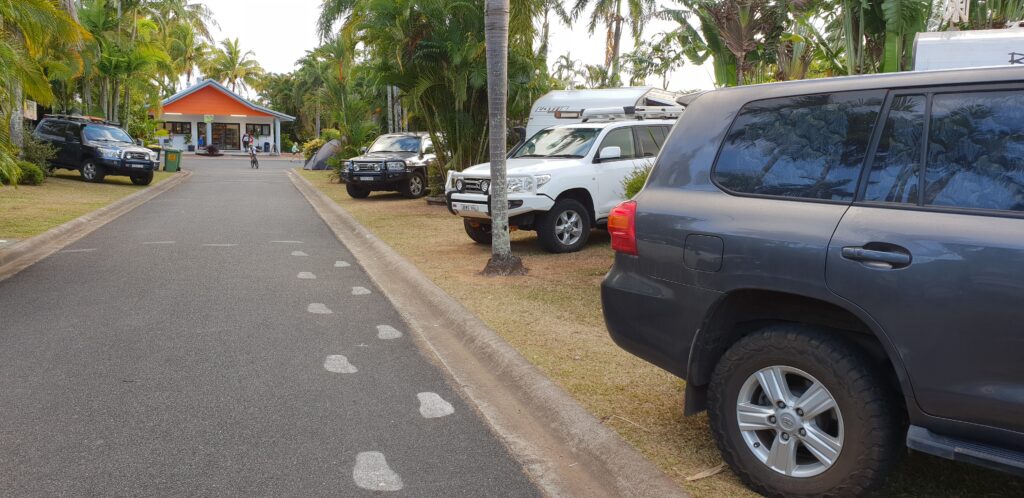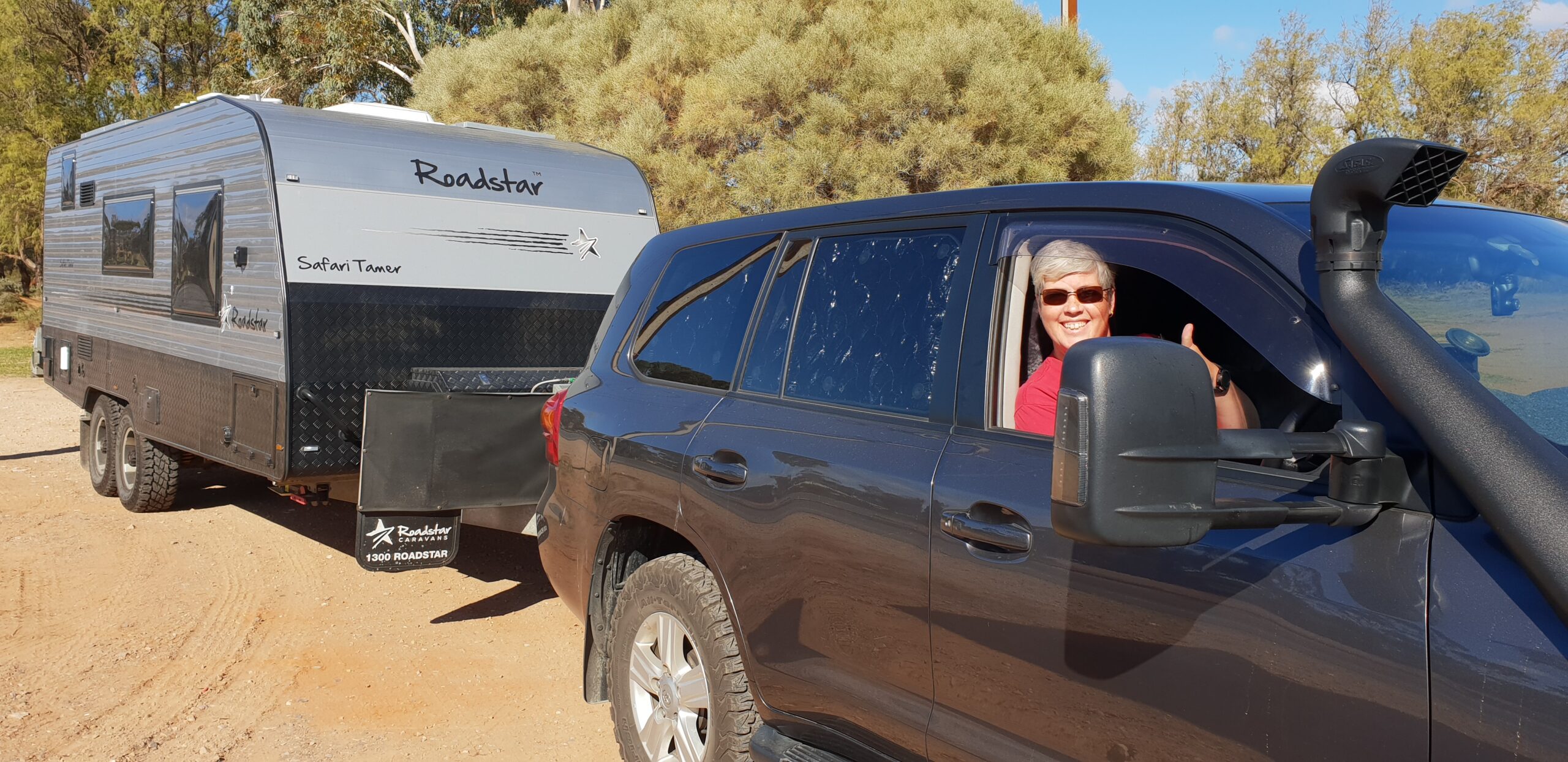If you’re new to towing a caravan, it can be a bit daunting to ask for advice on caravan and camping Facebook groups. Most people are well-meaning but some can come across as quite nasty. Also, the advice can be contradictory. This is what we consider to be the very basics for a safe towing experience. The gear you need, what to do in an emergency and some great tips to make you look like a pro when reversing into a site.
The essential gear you need for towing.
When you first go out and purchase your first caravan, thoughts turn to all the fabulous accessories you can buy to make your travels more like staying in a luxury holiday resort. Not that there’s anything wrong with that. I’m all for getting the latest gadgets to play with while you’re away. But what about the essential gear you need to make your towing experience safer? How often do you think about that?

In this article, we want to get you thinking about what accessories you need to make sure your towing experience is as safe as possible. If you haven’t got a lot of towing experience, here’s a list of things you should go out and purchase right now if you already haven’t done so.
Do not overtake turning vehicle sign
Did you know that if the total length of your rig (combined car and trailer) is greater than 7.5 metres, and, as a result of that length, you need to straddle turning lanes such as those at a roundabout, then you are required to fit a Do Not Overtake Turning Vehicle sign to the back of your trailer? This includes car and trailer combinations that exceed this length. Now before you jump down my throat and say your rig couldn’t possibly be that long, consider a Ford Ranger on its own will be around 5.5 metres long. It’s not going to take a long caravan to put you well over 7.5 metres.

Extension side mirrors
It staggers me just how many caravanners refuse to fit extension mirrors when towing their vans. Apart from the obvious safety they offer, if your van is 2.5 metres wide, you’re probably breaking the law by not fitting them. A simple test is to measure the distance between the outer edges of your car’s side mirrors and compare that distance with the full width of your caravan (including the awning arms). If the distance between the mirrors is less than the width of your van, you must fit extension mirrors by law.
Trailer sway control
This is one of those accessories you should fit that you hope you never need to use. Trailer Sway Control works similarly to the traction control on your tow vehicle. A sensor mounted to the van detects the G-forces created by a swaying trailer and applies the trailer’s brakes to pull the rig back into line. These systems are typically fitted when the van is being manufactured but they can also be fitted as an after-market accessory if your van has electric brakes.

Reversing camera
How many times have you seen a couple trying to reverse their van at a caravan park where one of them is standing behind the van trying to direct the driver without realising they cannot be seen? Or have you ever tried to reverse into a site during school holidays with kids darting all around and behind you on their bikes? The ability to see directly behind your caravan when reversing cannot be underestimated. What’s more, if you have the camera wired up so that it is on all the time, you can use it to see any traffic directly behind you as you drive along the road. Reversing cameras come in both wired and wireless versions and can be retrofitted to any caravan.
UHF CB Radio
Friends of ours arrived at an overnight stop only to find they hadn’t shut their caravan door properly and that it had been swinging around while they were driving and it left a huge dent in the side of their van. If only they had a UHF radio. Someone may have alerted them before it did so much damage. You can fit a UHF CB radio in your vehicle permanently or simply use a handheld unit. Either way, you will have the means to communicate with other road users and they can contact you if need be.

What to do if you get the wobbles:
It seems not a day goes past when there isn’t a social media report of a caravan getting the wobbles and flipping over with pics of the aftermath showing the tow vehicle on its side and the contents of the rig spread over a wide area. It is a frightening thing and, if it happens to you, it will bring your holiday to an abrupt end, if you’re lucky enough to survive it.
Getting the wobbles can happen even to a driver with extensive towing experience and the best set-up rig. A sudden strong gust of wind hitting the side of the van can be enough to unsettle an otherwise completely stable combination.

If you have never experienced the wobbles while towing your caravan, I can tell you from experience it is frightening. It happens almost without warning and can be all over in a matter of seconds. You need to be able to react immediately to the situation if you’re to have any hope of recovering from the wobbles.
Fortunately, regaining control of a swaying caravan is very simple. If you do start to feel the caravan swaying, all you need do is to follow these steps:
- Remain calm. Do not panic.
- Gradually release the accelerator and reduce speed.
- If the trailer is fitted with electronic brakes, activate them manually using the override feature.
- Do not touch the tow vehicle’s brakes and don’t try to control the sway by steering input.
- NEVER accelerate. This will only make the situation worse.
- Keep the steering wheel pointed straight ahead as much as possible.
- Once the vehicle has regained stability, put your hazard light on, maintain a constant speed at which the rig is stable, and pull off the road at the first safe opportunity.
- Check the rig for anything that may have caused the van to sway.
More often than not, the cause of a caravan that gets the wobbles is incorrect load distribution. More specifically, too much weight at the rear of the van. A full grey water tank, bicycles, and full jerry cans, all are normally stored at the rear of the van and can cause trailer instability that would otherwise not be present. If you are using a weight-distribution hitch, you may have too much tension on the bars, transferring additional weight to the rear of the van and causing it to be unstable.

Unfortunately, some caravans are poorly designed and are inherently unstable. Some owners we talk to often say their vans are only stable when they have full water tanks. If you are finding it impossible to correctly load your van to make it stable, you should engage the services of a mobile caravan weighing service. They usually have extensive towing experience and can accurately check the weights of your van and give you advice on how best to load it to ensure it is as stable as possible.
Our top tips for reversing your caravan into a site.
Use Low Range.
If your tow vehicle is a 4WD with low-range gearing, you may be able to use low range to provide more control when reversing onto a site. This is also particularly useful if the site is on a steep slope. You will need either a part-time 4WD system with manual locking front hubs or a full-time 4WD system with centre diff lock control. Vehicles that have this ability include Toyota Landcruisers and Prados, Nissan GU/GQ Patrols and Series 1 and 2 Land Rover Discoveries. Be warned that the use of low range on hard surfaces in other vehicles may damage the transmission so, if you’re unsure, check with your vehicle’s manufacturer or a competent mechanic.
Remember to Look Up
When reversing a caravan into a site, most people will concentrate on avoiding obstacles around the lower part of the van but completely forget about the top part. Leaning trees, overhanging branches, powerlines and the roofs of neighbouring buildings are all possible collision points with the roof of your van. Anyone with a lot of towing experience will tell you to always look up.

Don’t forget the tow vehicle
This might sound silly but often people reversing onto a site are so focused on avoiding obstacles with the caravan that they forget about the tow vehicle’s potential to hit something, especially the front as it swings around. Bollards, other vehicles, bins and fences all have a habit of getting in the way. We use a system where my wife is responsible for positioning the caravan and I take care of the car and we communicate using a handheld UHF radio.
Be a good guide.
How often do you see a couple reversing their caravan into a site where one of them is standing behind the van, madly flapping their arms around in frustration and the driver is shouting they can’t see where they are being directed? It is important to ensure you are both clear on the directions you intend to give and, as the guide, that the driver can see you at all times. Remember, if you can’t see the driver’s face in one of the mirrors, they cannot see you.


